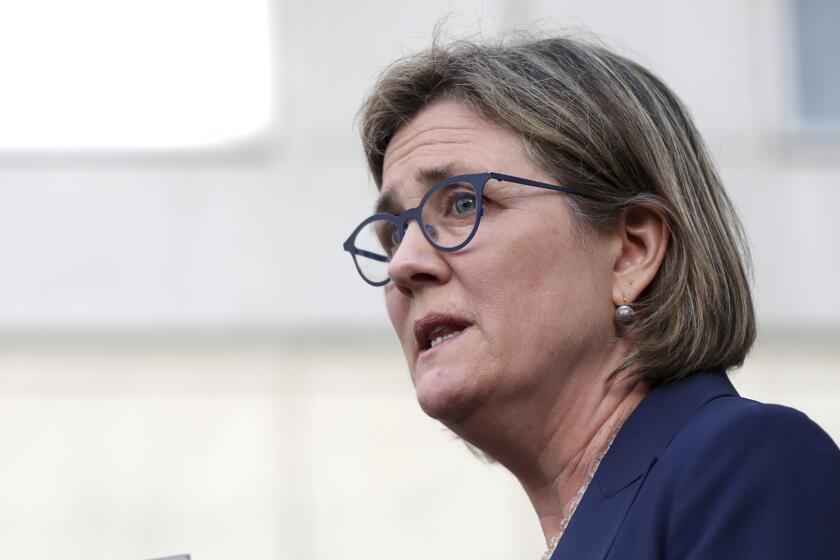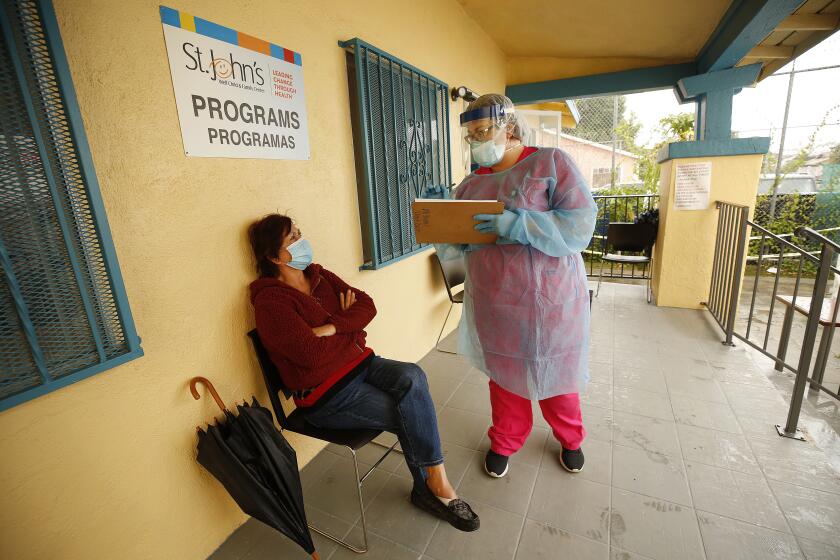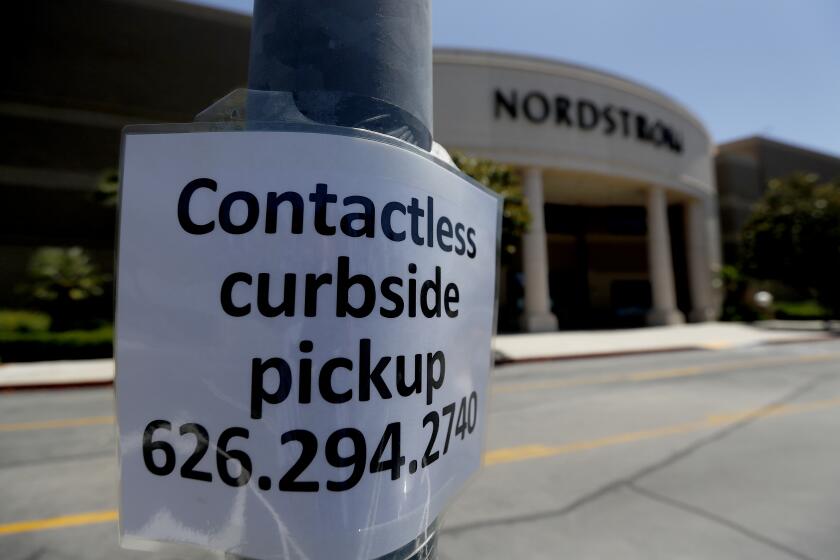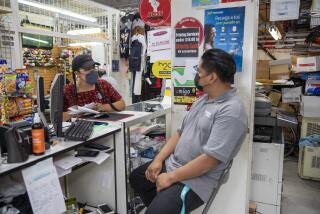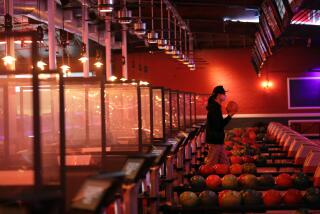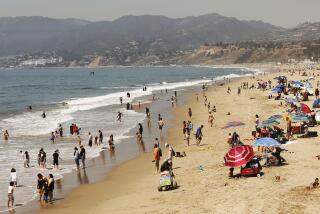Reopening California could easily backfire into second wave without masks and distancing, officials warn

- Share via
Los Angeles County, which has been hit harder than any other part of California by the COVID-19 pandemic, is rapidly beginning to reopen its economy.
Just this week, officials said churches and many more retail businesses could reopen with strict social distancing rules. And there is hope L.A. County could soon join surrounding areas in allowing limited in-person dining at restaurants.
But health officials have stressed that with the easing of stay-at-home orders comes potential dangers. Preventing new outbreaks depends on people wearing masks, avoiding crowded spaces and keeping at least six feet apart.
“There is a lot at stake as we reopen,” Los Angeles County Public Health Director Barbara Ferrer said Wednesday. “More people being around one another can result in more transmission of COVID-19 — just more cases and likely more hospitalizations and deaths. This is why it couldn’t be more important for us to take care of each other when we’re out of our homes.”
Ferrer’s comments echo those of health officials in the Bay Area, who also have been slowly reopening the economy while warning that health conditions could quickly deteriorate if people don’t follow the rules.
A key architect of the nation’s first coronavirus stay-at-home order says California’s fast pace of lifting restrictions “poses a very serious risk.”
Dr. Sara Cody, health officer for Santa Clara County and a key architect of the nation’s first coronavirus shelter-in-place order, this week criticized California’s increasingly fast pace of lifting stay-at-home restrictions.
Cody expressed concerns that California risks a surge in cases if it reopens too many sectors of society too quickly. Reopening so fast, she said, means there isn’t enough time to implement new procedures to make reopened activities safe.
Since early May, “the state has shifted away from the stay-at-home model and has made significant modifications with increasing frequency,” Cody said. “The pace at which the state has made these modifications is concerning to me.”
Santa Clara County was once the epicenter of the coronavirus outbreak in California. But that has since shifted to Los Angeles County, which has recorded more than 2,200 deaths and now is home to the lion’s share of COVID-19 cases.
Ferrer said Wednesday she thinks the reopenings that L.A. County is undertaking make public health sense — as long as the rules are followed.
But she stressed the stakes are high: “If there are 2 million more people going to offices, stores and houses of worship now, and even 2% are infected with COVID-19, we would have 40,000 people moving about that are capable of spreading this virus,” she said. “And if each infected person transmits to even just one other person, there could be 80,000 people infected over a couple of weeks.”
Since April 17, coronavirus infection rates have surged in L.A. County’s poorer neighborhoods, while cases have risen far more slowly in richer areas.
Health experts have made the same point.
“Without having social distancing, we are going to definitely see some increased spikes and transmission occurring. That’s definitely going to happen,” said Dr. Robert Kim-Farley, epidemiologist and infectious-disease expert at the UCLA Fielding School of Public Health.
At a briefing Wednesday, Los Angeles County Sheriff Alex Villanueva urged people to wear masks and practice social distancing so the gradual reopening of the county can continue without setbacks.
The Sheriff’s Department surveyed the coast from Santa Monica to Malibu over Memorial Day weekend and found that beachgoers were adhering to social distancing rules.“It was a success. Overall, people were respectful,” Villanueva said.
But in Pasadena’s Eaton Canyon, it was another story. Because of overcrowding, the popular trail will be closed until June.
Hikers should take advantage of L.A.’s vast network of trails and adjust their plans to avoid crowds, Villanueva said.
“If it looks too crowded where you’re going, just turn around and go somewhere else,” he said.
Gov. Gavin Newsom said that 47 of California’s 58 counties have met the state’s regional standards to ease his stay-at-home order, which include preparations to increase hospital capacity, testing and supplies of personal protective equipment. That has allowed retailers in most of the state, as well as hair salons and barbershops, to open.
From barber shops to shopping malls to restaurants, many businesses shuttered for months began to come back to life this week as government officials rapidly lifted stay-at-home orders that helped slow the spread of coronavirus.
In Los Angeles County, these are the areas covered by the modified order issued Tuesday by health officials.
- Faith-based organizations can resume services, with the number of congregants limited to 25% of the building’s capacity or a maximum of 100 people, whichever is lower.
- All retail establishments, including those in indoor and outdoor shopping centers, can open for business at 50% capacity; flea markets, swap meets and drive-in movie theaters can also resume operations.
- Pools, hot tubs and saunas that are in a multiunit residence or part of a homeowners association can open.
- In-person protests are permitted as long as attendance is limited to 25% of the area’s maximum occupancy or a maximum of 100 attendees, whichever is lower.
- People 65 or older and all people with underlying health conditions should remain in their residences as much as possible, health experts say. People in these categories should leave their residences only to seek medical care, exercise or obtain food or other necessities. Telecommuting should continue as much as possible.
These businesses are still covered by the county’s stay-at-home order:
- Bars and nightclubs
- Gyms and fitness centers
- Movie theaters
- Live venues, sports stadiums, arenas, festival spaces, etc.
- Bowling alleys
- Public piers
- Public pools
- Personal grooming businesses such as hair and nail salons
- Indoor museums
- Community centers
More to Read
Sign up for Essential California
The most important California stories and recommendations in your inbox every morning.
You may occasionally receive promotional content from the Los Angeles Times.
